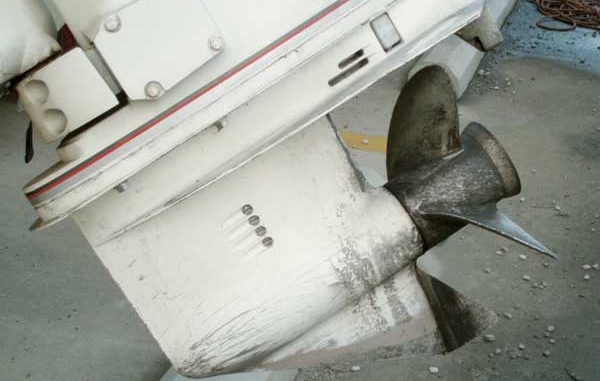
Put on your walking boots, and kick up a mess of rabbits on these three WMAs.
There are many questions I have been asked over the years, but there are some questions that seem to be asked over and over again. One of these has to do with the possibility of oil leaking from the lower unit of the engine.
It usually sounds something like this: “I have a 1997 XYZ two-stroke, 40-horsepower outboard. I ran my motor the other day since I had not run my boat in about a month and a half. The next day I noticed some very black oil that looked like it was draining from my prop down the skeg. It wasn’t a lot, but also not a little. I pulled my lower unit drain plug to inspect the lower-unit oil. The oil was very clean, like new. Could you tell me where you think this oil is coming from, and what I should do about it?”
The oil that this boater was seeing is probably partially burned 50:1 oil from the engine powerhead. This mixture of oil and carbon builds up in the exhaust chamber of the engine, and eventually will wash off and drain out. The result is a very black oily sludge coming from the propeller.
In order to be positive this is not oil from the lower unit, there are a couple of things that should be done. The first was already done when the owner checked his lower-unit oil by removing the oil drain screw and noting the condition and color of the oil.
As he stated, the oil was “very clean, like new.” This would be in contrast to the black oil leaking down the skeg, a fairly good indicator that the oil in question did not come out of the lower unit.
The second and much more reliable test would be to drain the lower-unit oil completely, and then test the lower unit for leaks using a pressure tester. The lower-unit pressure tester looks something like a bicycle air pump with a pressure gauge and a hose with an adaptor to allow it to be screwed into the oil drain hole in the lower unit.
Once the oil is completely drained and the pressure gauge is screwed into the oil drain hole, you would pump the gauge up to the prescribed air pressure, and monitor it to see if it leaks. Air pressure will leak out much faster and easier than oil; therefore, this is the most reliable test of the condition of all of the lower unit seals and O-rings.
Providing that the pressure test shows no leakage in the lower unit, remove the gauge, fill the lower unit with fresh oil and move on to the real cause of the black oil.
This boater did not indicate how long it had been since the engine had a tune-up. This black soot is usually an indication of an engine that is running too rich. This can sometimes be the result of an ignition system that is in need of some tender, loving care. Sometimes it can be as simple as just replacing the spark plugs.
Other engines may require more care such as replacing some of the ignition components because they are not performing up to specifications. It may also be stale fuel in the gas tank.
If the boat has not been run in a long period of time, then the gasoline becomes stale and loses some of its octane. This will cause the engine to become less efficient in burning the gas and oil mixture, which will result in the black oily residue in the exhaust chamber.
After performing a good tune-up, you would want to clean out the inside of the engine to remove any of this oily residue. The process of cleaning and de-carbonizing the inside of your engine is very simple. It does not require any special tools. You do not have to disassemble the engine block to do any of this cleaning.
All you have to do is purchase a can of engine de-carbonizing spray from your local dealer and follow the directions on the can. Most engine manufacturers sell this product. They all have a different name for it. Mercury calls theirs Power Tune, Evinrude calls it Engine Tune. I am not sure what name Yamaha gives theirs, but they also have one.
The process is fairly simple. You remove the air silencer from the front of your carburetors. This will expose the throat of each carburetor so that you can spray the cleaner directly into the engine. Make sure you have a suitable water supply to your engine, and run it for several minutes to get it up to normal operating temperature. You then increase your throttle in neutral to approximately 2,000 rpm.
At this point, you spray the cleaner directly into each carburetor throat. You will spray each carburetor approximately 10 seconds, and take turns from one carburetor to the next until you have used the entire can of cleaner. Now turn off the engine and let it set for approximately 15 minutes. Restart your engine, and let it idle for another 15 to 20 minutes to burn off the leftover cleaner and flush out that oily sludge.
This product not only cleans out the exhaust build up, but it also cleans gum and varnish build-up from the ring grooves on the pistons, and will help extend the life of your engine.
Milder weather is just around the bend. It is time to start considering spring tune-ups and other general maintenance for your boat motor and trailer. Don’t forget consultations with The Boat Doctor are always free.
If you have any questions about your rig, send an e-mail to hanktheboatdr@yahoo.com.


